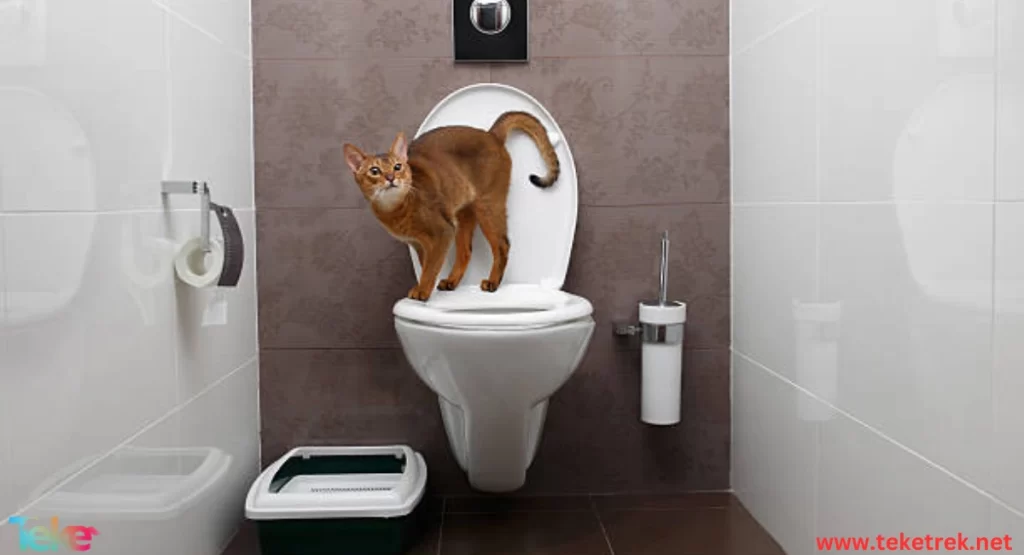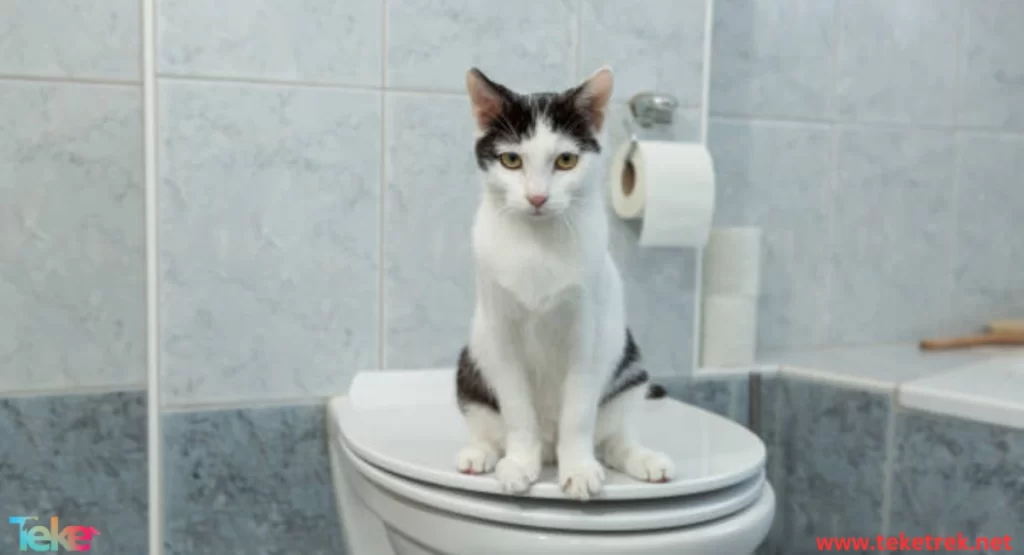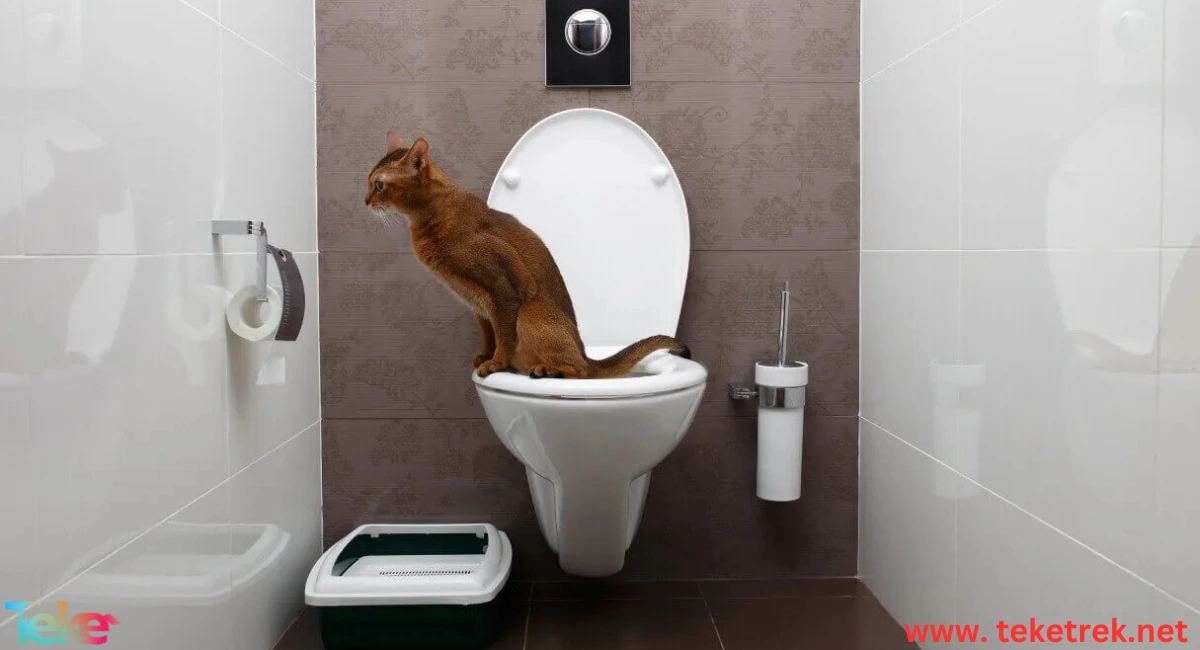One of the most embarrassing complaints from cat owners is that their cat doesn’t regularly use the toilet or litter box. Instead, it sits in a corner of the house to relieve itself, embarrassing its owner in front of guests. Toilet training cats is not a simple task; it requires some precise steps to accomplish this task، Here are the details in this article from teketrek.
Benefits of toilet training cats
Learn how to toilet train cats and enjoy many benefits, such as:
- Eliminating the unpleasant odors emitted by cats after relieving themselves.
- Save the expensive costs of purchasing cat litter.
- Avoid serious diseases resulting from the interaction of cat urine and feces with the air and litter, which results in the growth of harmful fungi and parasitic diseases.
- Preserve the appearance of cat fur from sand.

Tools Needed for Cat Training
There are some tools you should have ready when considering how to toilet train a cat. These tools help complete the task as quickly as possible. These tools include:
- Several boxes made of wood or plastic, taking into account the cat’s size. The box must be appropriate for the cat’s size so it is not cramped.
- Get litter, which is specially designed for cats and is manufactured for this specific purpose: sitting on it to relieve themselves.
- Prepare a small brush to comb the cat’s fur.
- Prepare cat shampoo and lotion to clean the cat of any microscopic insects or bacteria stuck inside.
Gradual Training Steps
How to toilet train a cat are easy and simple steps that can be followed on an ongoing basis to ensure the success of this task and accustom cats to using the bathroom instead of litter. These steps include:
- Place more than one litter box in different corners of the house.
- Motivate cats to relieve themselves in the boxes provided, and then give them rewards to improve their psychological state.
- Avoid yelling and violence when cats do not respond to commands.
- Take the cat to the bathroom immediately after eating and drinking.
- After accustoming cats to using litter boxes, move the boxes to the bathroom.
- After a while, completely ban litter boxes so that cats can relieve themselves in the bathroom like humans.
- Perfume the bathroom with attractive scents, as cats flee unpleasant odors.
- Provide a special device for cleaning the area where cats relieve themselves.
- Lucid water must be used to clean the anus of cats after relieving themselves to prevent the growth of fungi and germs.
Common Training Problems and How to Deal With Them
After discussing how to toilet train cats, we must identify the most important problems that will be encountered during training and how to deal with them. These problems are as follows:
- Boredom from training cats: Feeling bored with training the cats in the house to relieve themselves in the bathroom instead of the litter box is one of the most important feelings that will be experienced.
- Cats differ from one another in terms of comprehension, understanding, and application. It is important to be patient, kind, and affectionate when dealing with these delicate creatures.
- Stress and Aggression from Cats: Cats can feel stressed and anxious, and may even become aggressive if you insist on training them to use the toilet instead of litter.
Tips for Successful Training
There are some tips to follow when learning how to toilet train cats. These include:
- Avoid unpleasant odors and clean the cat regularly, as cats are repelled by unpleasant odors. Therefore, the bathroom must be constantly scented to attract cats to use it.
- The cat being trained must be at least 6 months old to understand and follow commands.
- Provide safety, comfort, and calm during training. Do not frighten, threaten, or punish the cat, lest it run away from its owner.
- Use clean, hygienic tools made of high-quality materials to clean, sterilize, and disinfect cats, preventing the growth of bacteria inside them.
- Be patient, determined, and persistent in effectively toilet training cats.
- The toilet lid must be opened regularly so the cat can use the toilet.
- It’s best to choose the right time to toilet train your cat, specifically immediately after eating.

When should you stop training if the cat doesn’t respond?
How to toilet train a cat isn’t complicated. It requires patience and determination to achieve the right results. You can stop training your cat if it doesn’t respond in the following cases:
- Cat training should stop and be replaced with a toilet, just like a human, if the cat reaches a stage of nervousness and stubbornness.
- Training takes a long time until the cat understands that toileting in this area is prohibited, and that toileting is permitted.
- Pool training is permitted for cats over six months old.
Conclusion
Now that we’ve learned how to train cats to use the toilet instead of litter, we can point out that there are many different breeds and types of cats, and each cat differs from the other in terms of understanding and comprehension. One cat may respond in a week, another in a month, and yet another after a year. Therefore, it’s important to be patient when accustoming cats to using the toilet, as well as to be persistent, trained, and not despairing in changing their habits for the better. Toilet training is appropriate for all cats, as it protects them from diseases that can be contracted when they sit in the litter box to relieve themselves. Fungi and bacteria can stick to the cat’s skin and cause numerous health problems and damage.





